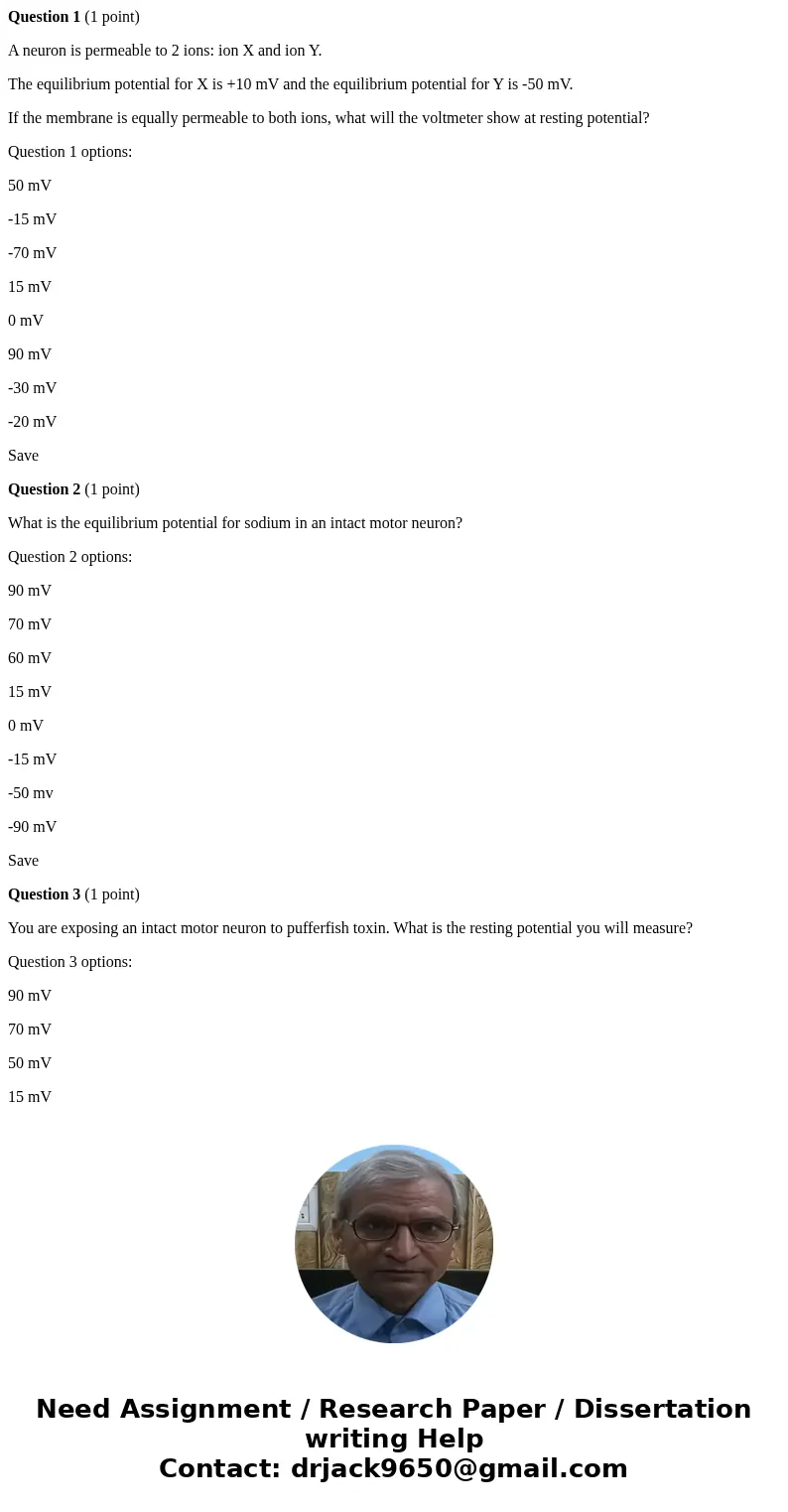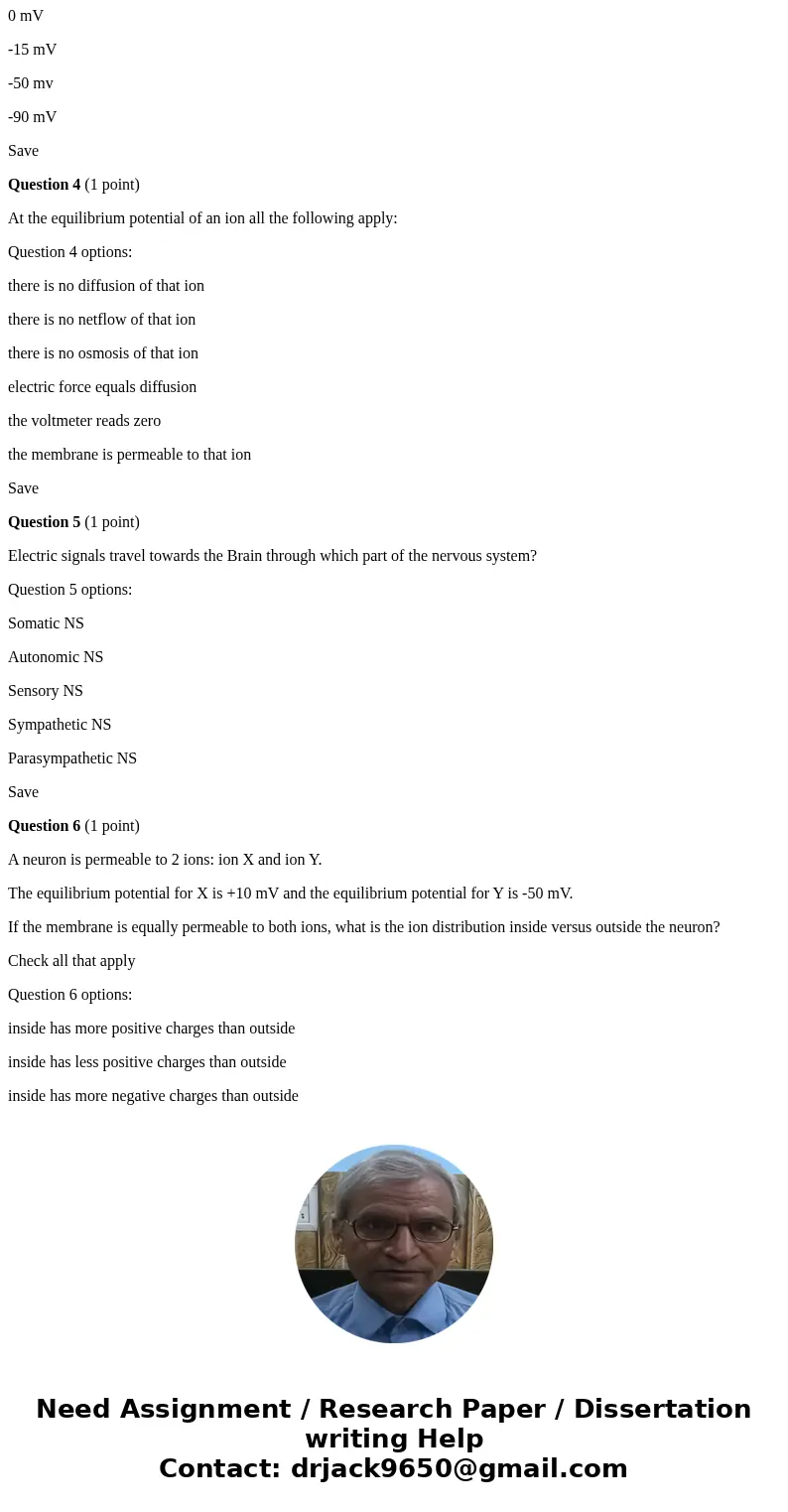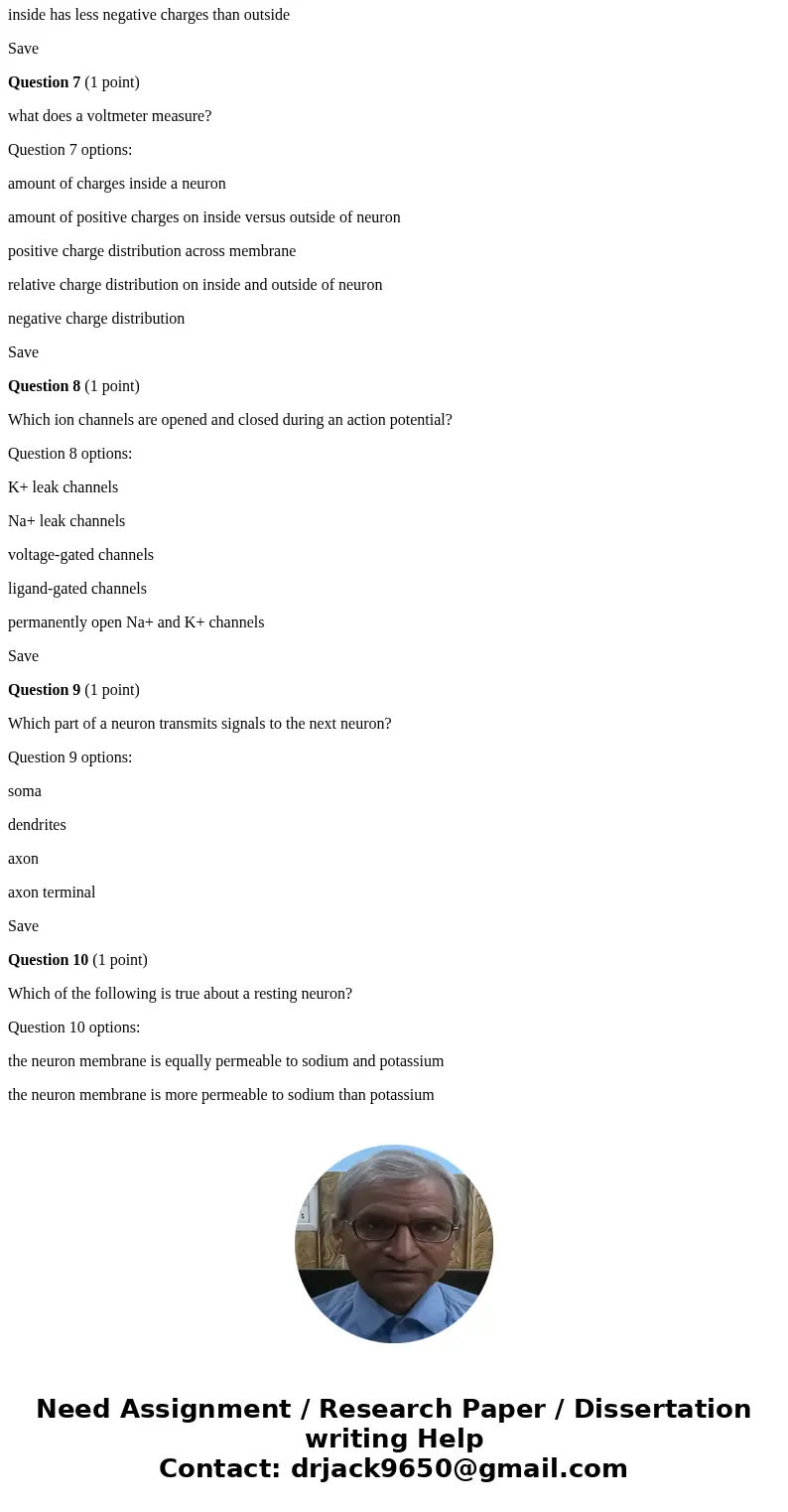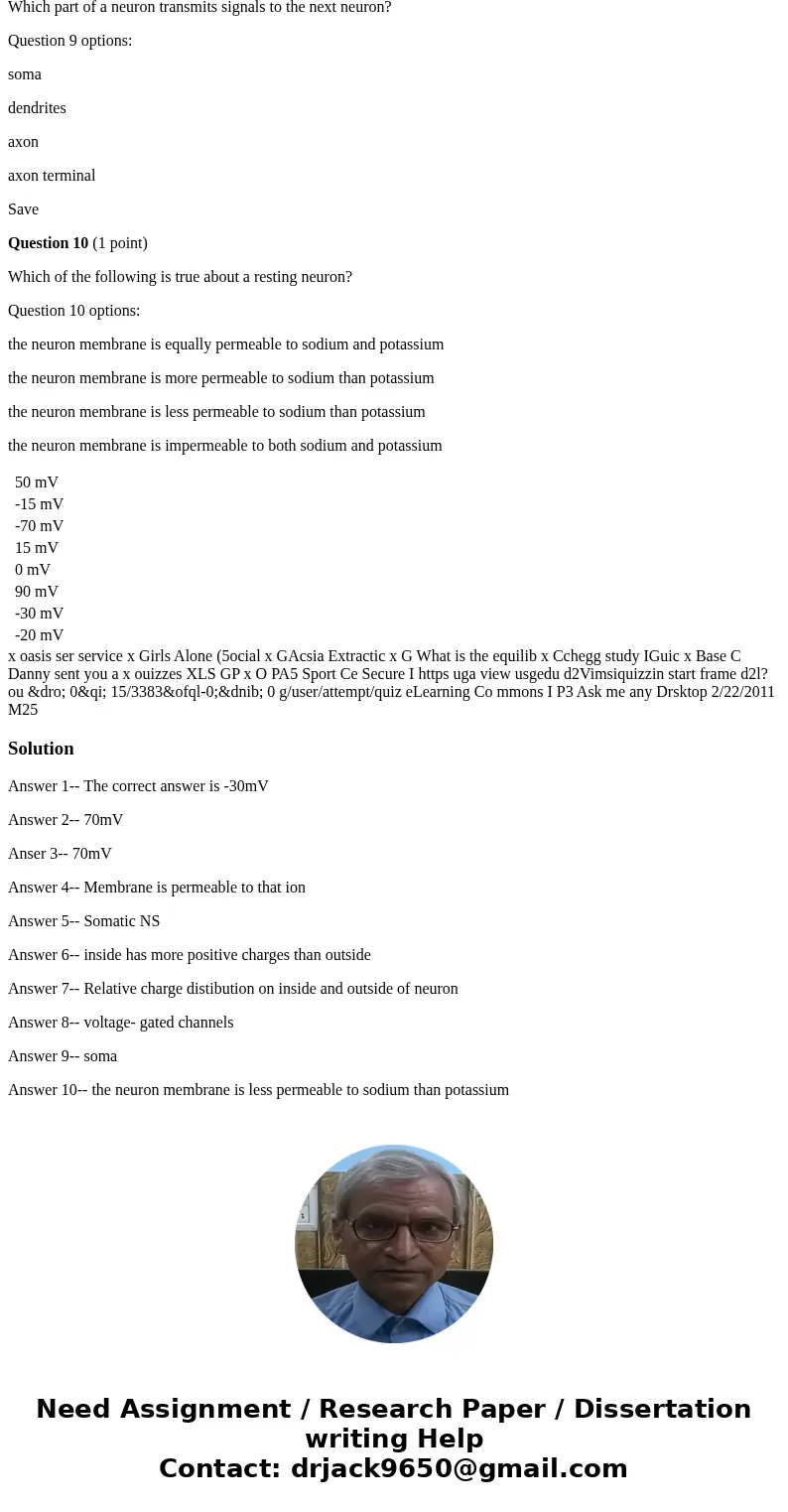Question 1 1 point A neuron is permeable to 2 ions ion X and
Question 1 (1 point)
A neuron is permeable to 2 ions: ion X and ion Y.
The equilibrium potential for X is +10 mV and the equilibrium potential for Y is -50 mV.
If the membrane is equally permeable to both ions, what will the voltmeter show at resting potential?
Question 1 options:
50 mV
-15 mV
-70 mV
15 mV
0 mV
90 mV
-30 mV
-20 mV
Save
Question 2 (1 point)
What is the equilibrium potential for sodium in an intact motor neuron?
Question 2 options:
90 mV
70 mV
60 mV
15 mV
0 mV
-15 mV
-50 mv
-90 mV
Save
Question 3 (1 point)
You are exposing an intact motor neuron to pufferfish toxin. What is the resting potential you will measure?
Question 3 options:
90 mV
70 mV
50 mV
15 mV
0 mV
-15 mV
-50 mv
-90 mV
Save
Question 4 (1 point)
At the equilibrium potential of an ion all the following apply:
Question 4 options:
there is no diffusion of that ion
there is no netflow of that ion
there is no osmosis of that ion
electric force equals diffusion
the voltmeter reads zero
the membrane is permeable to that ion
Save
Question 5 (1 point)
Electric signals travel towards the Brain through which part of the nervous system?
Question 5 options:
Somatic NS
Autonomic NS
Sensory NS
Sympathetic NS
Parasympathetic NS
Save
Question 6 (1 point)
A neuron is permeable to 2 ions: ion X and ion Y.
The equilibrium potential for X is +10 mV and the equilibrium potential for Y is -50 mV.
If the membrane is equally permeable to both ions, what is the ion distribution inside versus outside the neuron?
Check all that apply
Question 6 options:
inside has more positive charges than outside
inside has less positive charges than outside
inside has more negative charges than outside
inside has less negative charges than outside
Save
Question 7 (1 point)
what does a voltmeter measure?
Question 7 options:
amount of charges inside a neuron
amount of positive charges on inside versus outside of neuron
positive charge distribution across membrane
relative charge distribution on inside and outside of neuron
negative charge distribution
Save
Question 8 (1 point)
Which ion channels are opened and closed during an action potential?
Question 8 options:
K+ leak channels
Na+ leak channels
voltage-gated channels
ligand-gated channels
permanently open Na+ and K+ channels
Save
Question 9 (1 point)
Which part of a neuron transmits signals to the next neuron?
Question 9 options:
soma
dendrites
axon
axon terminal
Save
Question 10 (1 point)
Which of the following is true about a resting neuron?
Question 10 options:
the neuron membrane is equally permeable to sodium and potassium
the neuron membrane is more permeable to sodium than potassium
the neuron membrane is less permeable to sodium than potassium
the neuron membrane is impermeable to both sodium and potassium
| 50 mV | |
| -15 mV | |
| -70 mV | |
| 15 mV | |
| 0 mV | |
| 90 mV | |
| -30 mV | |
| -20 mV |
Solution
Answer 1-- The correct answer is -30mV
Answer 2-- 70mV
Anser 3-- 70mV
Answer 4-- Membrane is permeable to that ion
Answer 5-- Somatic NS
Answer 6-- inside has more positive charges than outside
Answer 7-- Relative charge distibution on inside and outside of neuron
Answer 8-- voltage- gated channels
Answer 9-- soma
Answer 10-- the neuron membrane is less permeable to sodium than potassium




 Homework Sourse
Homework Sourse